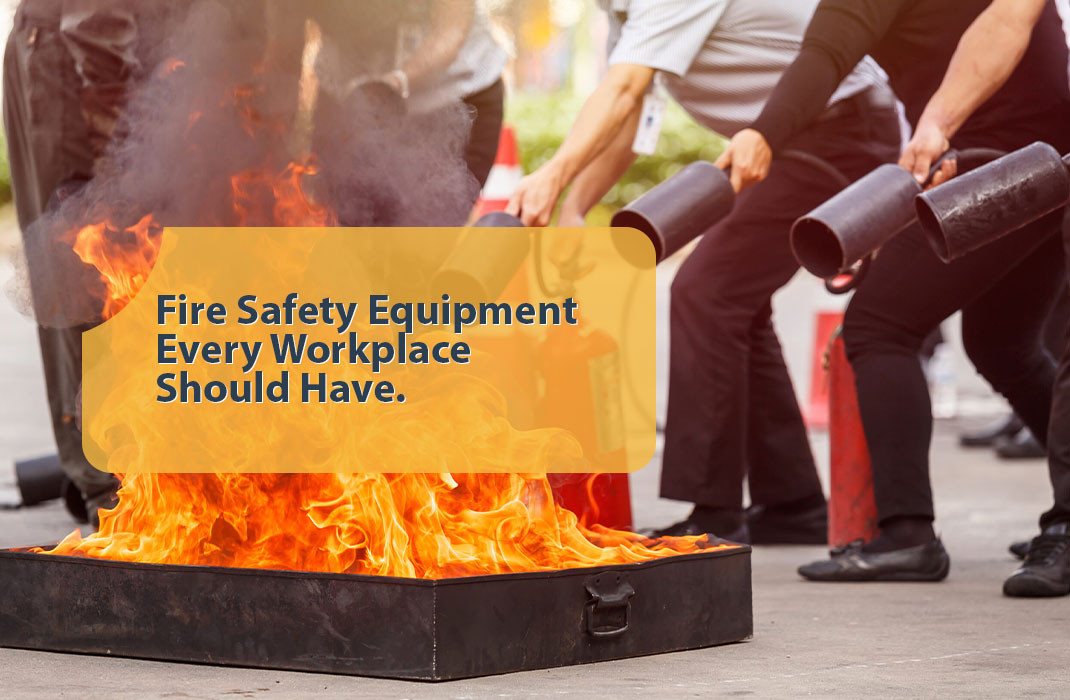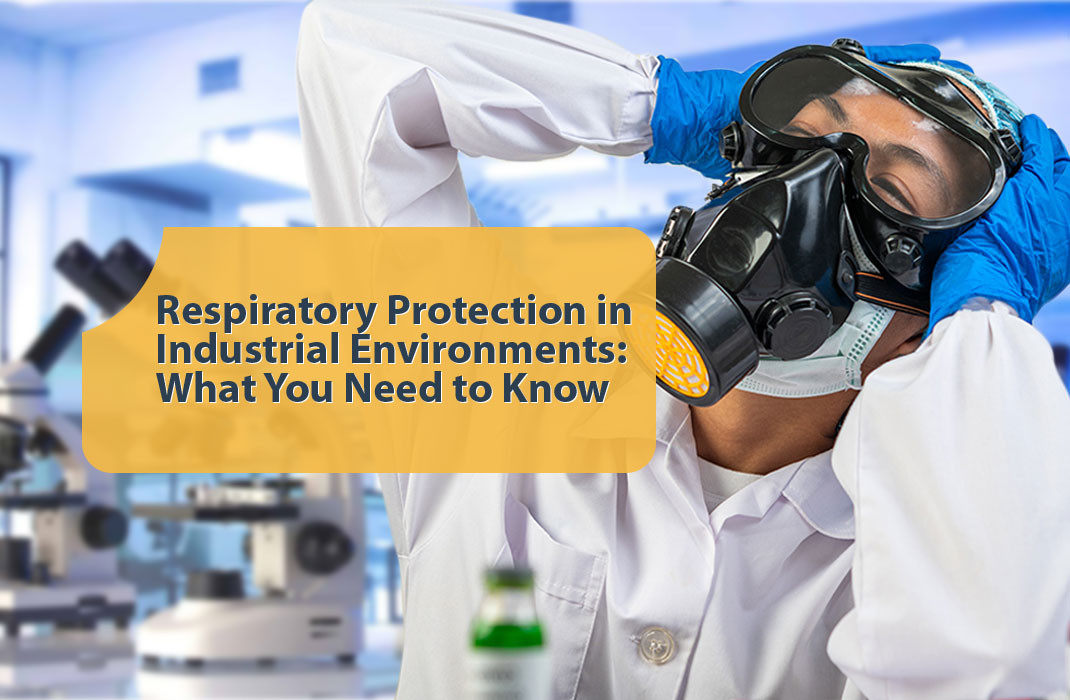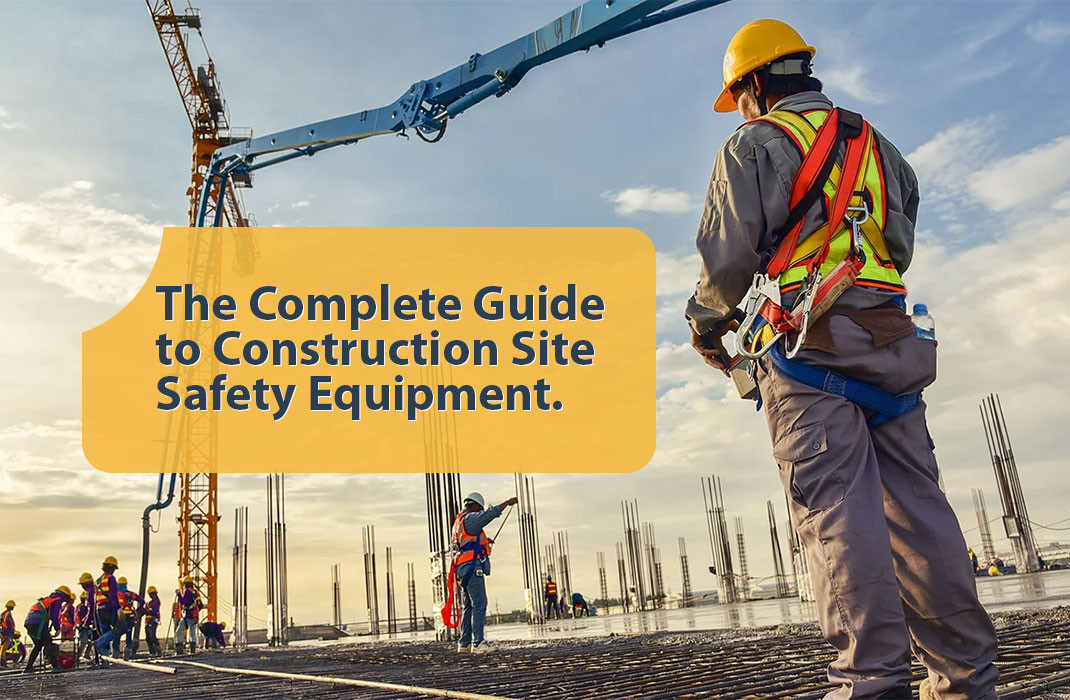Fire Safety Equipment Every Workplace Should Have

Fire Safety Equipment Every Workplace Should Have
Workplace fires pose one of the most serious threats to employee safety and business continuity. Every year, thousands of workplace fires result in injuries, fatalities, and millions of dollars in property damage across industrial facilities, offices, and commercial buildings. The key to preventing catastrophic losses lies in comprehensive fire safety preparation, which begins with having the right fire safety equipment strategically placed and properly maintained throughout your facility.
In Tanzania's rapidly growing industrial sector, from manufacturing plants in Dar es Salaam to mining operations across the country, fire safety equipment isn't just a regulatory requirement—it's a critical investment in protecting lives, preserving assets, and ensuring business continuity. Understanding what fire safety equipment your workplace needs and how to implement an effective fire protection strategy can mean the difference between a minor incident and a devastating disaster.
Understanding Workplace Fire Hazards
Before selecting appropriate fire safety equipment, it's essential to understand the various fire hazards present in different workplace environments. Fires require three elements to exist: fuel, oxygen, and heat—commonly known as the fire triangle. Removing any one of these elements will extinguish a fire, which is the principle behind most fire suppression methods.
Workplace fire hazards vary significantly depending on the industry and operations involved. Manufacturing facilities face risks from flammable chemicals, hot processes, and electrical equipment. Office buildings primarily deal with electrical fires from computers and lighting systems, along with combustible materials like paper and furniture. Warehouses and storage facilities must address risks from stored materials, forklifts, and charging stations.
Industrial facilities present the most complex fire hazards. Oil and gas operations involve highly flammable liquids and gases under pressure. Mining operations deal with combustible dusts, electrical equipment in harsh environments, and potential methane gas accumulation. Chemical processing plants handle reactive materials that can create explosive atmospheres or generate toxic smoke when burning.
Understanding these hazards helps determine the types and quantities of fire safety equipment needed. Different fire classes require different suppression methods: Class A fires involve ordinary combustibles like wood and paper, Class B fires involve flammable liquids, Class C fires involve electrical equipment, Class D fires involve combustible metals, and Class K fires involve cooking oils and fats.
Essential Fire Detection and Alarm Systems
Early detection is crucial for effective fire response. Modern fire detection systems use various technologies to identify fires in their earliest stages, providing precious time for evacuation and suppression efforts. The type of detection system needed depends on the specific hazards and environmental conditions present in each workplace.
Smoke detectors are the most common fire detection devices, using either ionization or photoelectric sensors to detect smoke particles. Ionization detectors respond faster to flaming fires with smaller particles, while photoelectric detectors are more effective at detecting smoldering fires with larger particles. Many modern detectors combine both technologies for comprehensive coverage.
Heat detectors activate when temperatures reach predetermined levels or when temperature rise rates exceed normal parameters. These devices are ideal for environments where smoke detectors might cause false alarms, such as dusty industrial areas or kitchens. Fixed-temperature heat detectors activate at specific temperatures, while rate-of-rise detectors respond to rapid temperature increases.
Flame detectors use optical sensors to detect the infrared or ultraviolet radiation emitted by flames. These devices are particularly effective in outdoor applications or large open areas where smoke or heat might dissipate before reaching conventional detectors. Advanced flame detectors can distinguish between actual fires and false sources like sunlight or welding operations.
Gas detection systems monitor for combustible gases that could create explosive atmospheres. These systems are essential in facilities handling flammable liquids or gases, providing early warning before dangerous concentrations develop. Integration with ventilation systems allows automatic activation of exhaust fans to reduce gas concentrations.
Fire alarm systems coordinate detection devices throughout the facility and provide audible and visual warnings to occupants. Modern systems offer addressable technology that pinpoints the exact location of alarm activation, helping emergency responders locate fires quickly. Integration with building systems allows automatic activation of sprinklers, exhaust fans, and emergency lighting.
Portable Fire Extinguishers
Portable fire extinguishers provide the first line of defense against small fires and can prevent minor incidents from becoming major disasters. However, extinguisher selection must match the specific fire hazards present in each area. Using the wrong type of extinguisher can be ineffective or even dangerous.
Water extinguishers are effective against Class A fires involving ordinary combustibles. They work by cooling the burning material below its ignition temperature. However, water conducts electricity and can spread flammable liquid fires, making it dangerous for Class B and C fires. Water extinguishers are typically found in offices, warehouses, and areas with primarily combustible solid materials.
Dry chemical extinguishers are versatile devices effective against Class A, B, and C fires. They work by interrupting the chemical reaction of the fire and coating the fuel with a barrier that prevents re-ignition. Multi-purpose dry chemical extinguishers containing monoammonium phosphate are the most common type in general workplace applications.
Carbon dioxide (CO2) extinguishers are ideal for electrical fires and flammable liquid fires in enclosed spaces. CO2 displaces oxygen around the fire, effectively smothering it without leaving residue that could damage sensitive equipment. These extinguishers are commonly found in server rooms, electrical panels, and laboratories.
Foam extinguishers work well on Class A and B fires, particularly those involving flammable liquids. The foam creates a barrier that prevents vapors from escaping and re-igniting. Aqueous film-forming foam (AFFF) extinguishers are effective on hydrocarbon fires, while alcohol-resistant foams work on polar solvent fires.
Clean agent extinguishers use environmentally friendly chemicals that leave no residue and are safe for use around people and sensitive equipment. These extinguishers are ideal for computer rooms, museums, and other areas where traditional extinguishing agents might cause damage. Halon alternatives like FM-200 and Novec 1230 provide effective fire suppression without ozone depletion concerns.
Fixed Fire Suppression Systems
Fixed fire suppression systems provide automatic fire protection for larger areas and high-value assets. These systems activate automatically when fires are detected, providing immediate suppression even when facilities are unoccupied. The type of system needed depends on the protected area, fire hazards, and occupancy considerations.
Sprinkler systems are the most common fixed suppression systems, using water to control or extinguish fires. Wet pipe systems keep water in the pipes at all times and activate immediately when sprinkler heads open. Dry pipe systems use pressurized air or nitrogen in the pipes, with water entering only when a sprinkler head activates. This design prevents freezing in unheated areas.
Pre-action sprinkler systems require two events before water is released: fire detection system activation and individual sprinkler head activation. This dual requirement reduces the risk of accidental water damage while maintaining effective fire protection. These systems are ideal for areas with sensitive equipment or materials that could be damaged by water.
Deluge systems activate all sprinkler heads simultaneously when the fire detection system activates. These systems provide rapid fire suppression over large areas and are commonly used in aircraft hangars, chemical storage areas, and other high-hazard applications. The immediate application of large water volumes can quickly control fast-spreading fires.
Foam suppression systems are designed specifically for flammable liquid fires. Low-expansion foam systems create a thick foam blanket that suppresses vapor formation and cools the fuel surface. High-expansion foam systems generate large volumes of lightweight foam that can fill entire rooms, making them ideal for aircraft hangars and warehouse applications.
Clean agent suppression systems use gaseous agents that extinguish fires without water damage. These systems are ideal for protecting sensitive equipment, irreplaceable materials, and occupied spaces. Agents like FM-200, Novec 1230, and inert gas mixtures provide effective fire suppression while maintaining safe oxygen levels for occupants.
Emergency Evacuation Equipment
Effective evacuation procedures save lives during fire emergencies, and proper equipment ensures all occupants can safely exit the building. Emergency evacuation equipment must be clearly marked, regularly maintained, and accessible to all building occupants, including those with disabilities.
Emergency lighting systems provide illumination when normal power fails during fires. Battery-powered emergency lights automatically activate when power is lost, illuminating exit routes and safety equipment locations. These systems must provide adequate light levels for safe evacuation and operate for minimum required durations.
Exit signs clearly mark evacuation routes and must remain visible during power outages. Modern LED exit signs with battery backup provide long-lasting, energy-efficient operation. Photoluminescent exit signs absorb ambient light and glow in darkness without requiring electrical power, providing backup identification even if emergency lighting fails.
Emergency communication systems allow building occupants to receive evacuation instructions and emergency responders to coordinate operations. Public address systems provide voice communication throughout the facility, while two-way communication systems allow occupants to report their status to emergency coordinators.
Evacuation chairs and equipment help mobility-impaired occupants safely exit multi-story buildings during emergencies. These devices allow trained personnel to assist individuals who cannot use stairs independently. Emergency evacuation plans must account for all building occupants and include procedures for assisting those requiring help.
Personal Protective Equipment for Fire Emergencies
Personal protective equipment designed for fire emergencies protects workers and emergency responders from heat, smoke, and toxic gases. This equipment is essential for personnel who might need to fight fires, assist in evacuations, or work in areas where fire hazards exist.
Fire-resistant clothing protects workers from flash fires and arc flash hazards. These garments are made from materials that resist ignition and provide insulation from heat. Different levels of protection are available depending on the specific hazards present. Arc-rated clothing provides additional protection for electrical workers facing arc flash risks.
Self-contained breathing apparatus (SCBA) provides clean breathing air in smoke-filled environments. These devices are essential for emergency response teams and workers who might need to enter hazardous atmospheres during fires. SCBA units require specialized training and regular maintenance to ensure reliable operation.
Emergency escape respirators provide temporary respiratory protection during evacuation from smoke-filled areas. These devices are simpler to use than SCBA and can be stored at workstations for immediate access during emergencies. Escape respirators typically provide 15-30 minutes of protection, sufficient for evacuation from most buildings.
Heat-protective equipment shields workers from radiant heat during firefighting operations. This equipment includes heat-resistant suits, gloves, and helmets designed to protect against extreme temperatures. Proximity suits allow workers to approach intense heat sources, while entry suits provide protection for short-duration exposure to flames.
Fire Safety Equipment Placement and Accessibility
Strategic placement of fire safety equipment ensures maximum effectiveness during emergencies. Equipment must be easily accessible, clearly marked, and positioned to provide comprehensive coverage throughout the facility. Placement decisions should consider traffic patterns, hazard locations, and evacuation routes.
Fire extinguishers must be located within maximum travel distances specified by fire codes. Generally, extinguishers should be within 75 feet for Class A hazards and 50 feet for Class B hazards. High-hazard areas may require closer spacing. Extinguishers should be mounted at consistent heights and clearly marked with signs visible from all directions.
Emergency equipment locations must remain unobstructed at all times. Storage of materials, equipment, or furniture around fire safety equipment creates dangerous delays during emergencies. Regular inspections should verify that access remains clear and equipment is visible.
Signage and marking systems help occupants locate fire safety equipment quickly during high-stress emergency situations. Photoluminescent signs remain visible in low-light conditions, while reflective materials increase visibility with flashlights or emergency lighting. Consistent color coding and symbols help identify different types of equipment.
Fire department connections provide external water supply connections for sprinkler and standpipe systems. These connections must remain accessible to fire department apparatus and clearly marked with appropriate signage. Regular testing ensures connections function properly and provide adequate water flow.
Maintenance and Inspection Requirements
Regular maintenance and inspection ensure fire safety equipment remains functional when needed. Maintenance requirements vary by equipment type but generally include visual inspections, functional testing, and professional servicing. Documentation of all maintenance activities is essential for regulatory compliance and insurance requirements.
Fire extinguisher maintenance includes monthly visual inspections and annual professional servicing. Visual inspections verify that pressure gauges show proper pressure, safety seals are intact, and there's no visible damage or obstruction. Annual servicing includes internal inspection, pressure testing, and recharging as needed.
Fire alarm system maintenance requires regular testing of all components, including detectors, control panels, and notification devices. Testing schedules typically include daily, weekly, monthly, and annual requirements depending on the component. Professional inspection and testing ensure systems meet current codes and function reliably.
Sprinkler system maintenance includes quarterly and annual inspections of various components. Water flow tests verify adequate pressure and flow rates, while obstruction investigations ensure sprinkler heads aren't blocked. Valve inspections confirm that control valves remain in proper positions and function correctly.
Emergency lighting testing includes monthly functional tests and annual battery capacity tests. Monthly tests verify that lights activate when normal power is interrupted and provide adequate illumination. Annual tests ensure batteries can power lights for required durations under emergency conditions.
Training and Education Programs
Effective fire safety equipment is only as good as the people who use it. Compr
Recent Posts
Respiratory Protection in Industrial Environments: What You Need to Know
About Us
Ultimate General Trading is a leading supplier based in Dar es Salaam, Tanzania, specializing in safety gear, personal protective equipment (PPE), uniforms, workwear, security wear, and accessories. We serve a wide range of industries including oil, gas, mining, and manufacturing.


